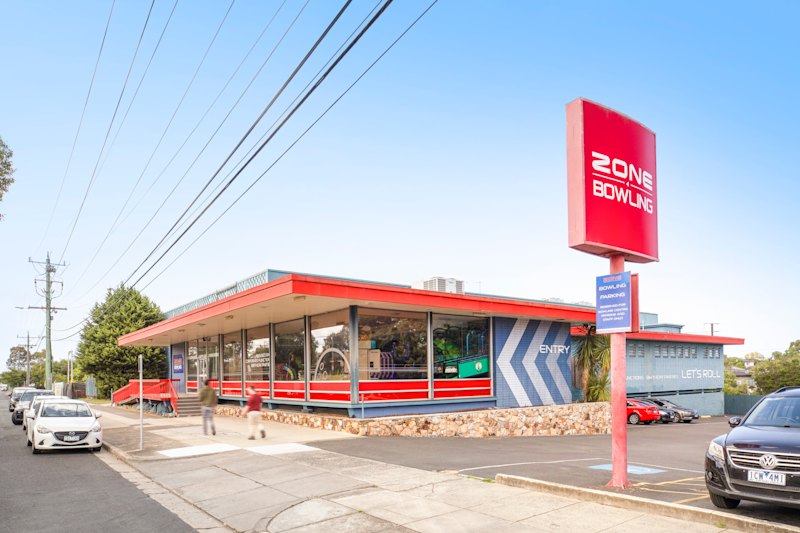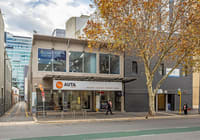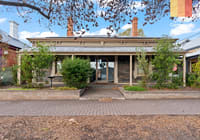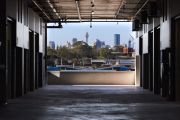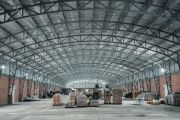
Brisbane's industrial vacancy rates are the lowest in six years
Brisbane’s industrial sector has recorded its lowest vacancy rates in years, as market conditions continue to strengthen across the city.
This is boosting rents, albeit at a modest rate, as the significant supply constraints that began last year are starting to impact the sector.
Average prime net face rents in Brisbane were $113 per square metre, while secondary rents were $93 per square metre in January, according to Knight Frank.
The industrial vacancy rate had also fallen for the past five consecutive quarters to a six-year low.
“Vacancy is trending downwards, and tenant demand is being boosted by improving economic conditions, population growth, major infrastructure projects and a mining resurgence,” Knight Frank’s partner and joint head of industrial in Queensland Mark Clifford said.
In the past year alone vacant industrial space in Brisbane has reduced by 18 per cent, or about 89,000 square metres, according to Knight Frank.
Mr Clifford said the first quarter of this year was dominated by smaller tenants leasing space of less than 8500 square metres.
Demand from larger tenants was expected to strengthen in the second half of this year, he said, however, major users continued to be active.
“Buildings of scale have accelerated land take-up, with the pre-commitment of Coles to a 66,000-square-metre distribution facility at Redbank being the latest example of major users’ upscaling their distribution premises in Brisbane, enabling the adoption of cutting-edge technology,” Mr Clifford said.
Major tenants were searching for efficiencies in their delivery chain, which was fuelling demand for new-generation automated facilities, as well as those with environmentally sustainable features.
“Industrial demand is being influenced by logistics operators as omni-channel retailing becomes entrenched in the supply chain,” he said.
“Delivering accurately, with complete trackability, quickly and on a cost-effective basis is now the key issue for many logistics operators.
“The efficiency of location to the local road network as well as long-haul travel are required, as well as a large flexible building shell with green ratings, which is often now demanded by the brand of product being stored for their own environmental reporting and standards.”
Available speculative space in Brisbane has fallen to 49,398 square metres, the lowest level in four years, however, this would likely trigger new construction this year, Mr Clifford said.
The Trade Coast is continuing to record the highest take up of any industrial precinct in Brisbane over the first quarter of 2019.
Colliers International research has found that available industrial land ready to develop in Brisbane is incredibly tight, with less than 3.5 years of supply remaining.
This had, in turn, led to reinvestment in older-style secondary assets in core locations, as tenants weigh up the benefits of being centrally located versus building new facilities in outer Brisbane regions.
Colliers International industrial national director Anthony White said a prime example was Lincoln Sentry, a Dulux subsidiary, choosing to remain close to its existing facility at Coopers Plains when it came time to relocate.
“There were options within 20 radial kilometres that on paper may have meant some rental savings, [but] came at a greater cost to both transport efficiencies and staff retention,” Mr White said.
“The facility at 5/243 Bradman Street in Acacia Ridge had great potential but is 20 years old and needed refurbishment.
“We negotiated with the private owner and their advisors, King and Co Property, to reinvest about $4 million into their facility and they were in turn rewarded with Lincoln Sentry taking up a 10-year lease before the current lease had even expired.”
The trend towards online retailing had resulted in institutions such as Stockland, Charter Hall, Frasers and Goodman speculatively constructing ultra high-grade industrial warehouses targeting the next wave of occupier expansion.
Colliers International industrial national director Matthew Frazer-Ryan said it seemed “bigger is better” as product volume and diversity of warehouse stock drove demand for more height, better and more efficient fire systems, and larger dock faces.
“CTI Logistics have taken full advantage of this trend, leasing approximately 10,000 square metres on a five-year term within Frasers Property’s South West 1 Industrial Estate in Berrinba [Logan],” he said.
“The key to this property is that it offered a ‘super awning’, which is a 30-metre-wide fully undercover loading area.
“No existing building in the market could provide that.”
Mr White said the trend towards new build and refurbished opportunities was also evident in the mid-tier Brisbane industrial market, which was experiencing a flight to quality among corporates looking to house distribution functions.
“Increasingly, corporate tenants looking for 2000 to 5000 square metres will not negotiate on building quality, with staff retention and environmental considerations being at the forefront of decision making,” he said.
“A recent example of this is Pentair Australia leasing 3500 square metres from Centennial Property Group in Murrarie following a substantial estate refurbishment including fire upgrades, new landscaping, carparking upgrades and additional staff amenities.”
Centennial Industrial and Logistics executive director Paul Ford said the deal had fit perfectly with their investment strategy.
“When we bought the property, it was 100 per cent vacant and we knew we had to invest further to attract the right users,” Mr Ford said.
“Corporates of this calibre want their staff to be housed in modern, attractive and safe buildings.”

